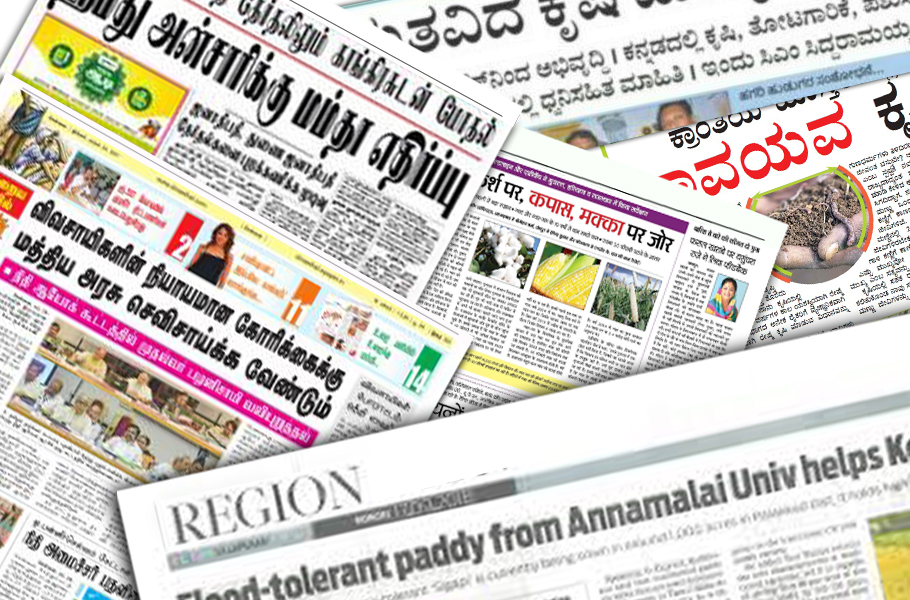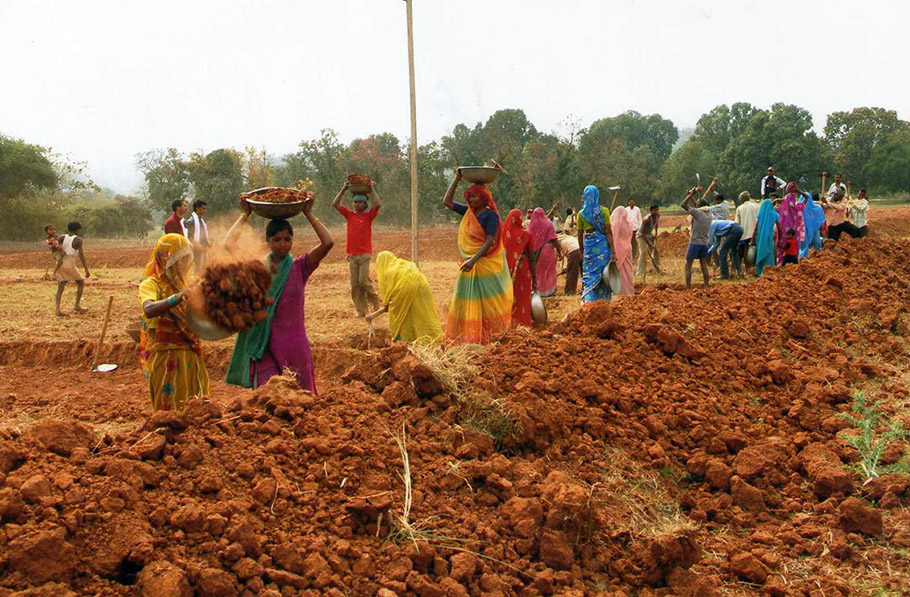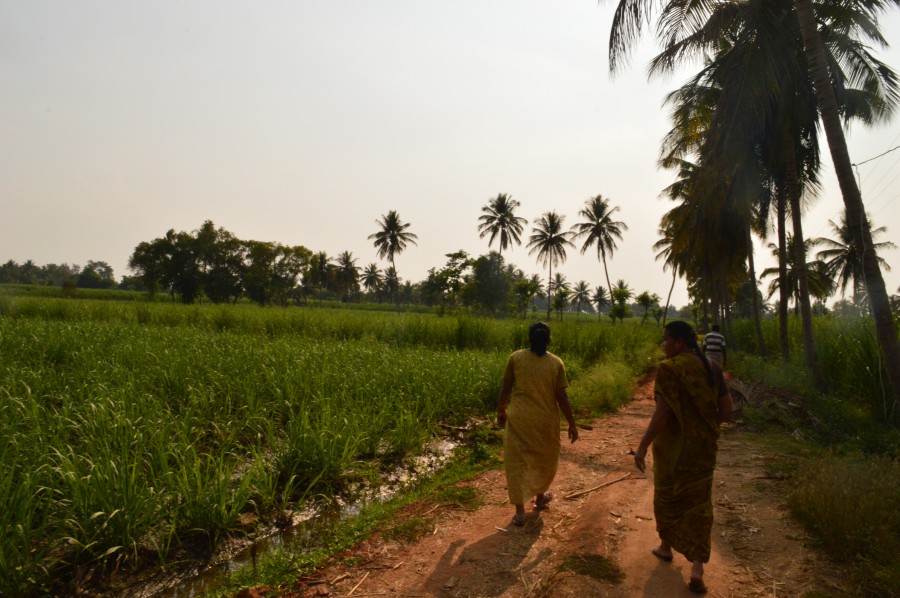
- Home
- News
- Analysis
- States
- Perspective
- Videos
- Education
- Entertainment
- Elections
- World Cup 2023
- Features
- Health
- Budget 2024-25
- Business
- Series
- NEET TANGLE
- Economy Series
- Earth Day
- Kashmir’s Frozen Turbulence
- India@75
- The legend of Ramjanmabhoomi
- Liberalisation@30
- How to tame a dragon
- Celebrating biodiversity
- Farm Matters
- 50 days of solitude
- Bringing Migrants Home
- Budget 2020
- Jharkhand Votes
- The Federal Investigates
- The Federal Impact
- Vanishing Sand
- Gandhi @ 150
- Andhra Today
- Field report
- Operation Gulmarg
- Pandemic @1 Mn in India
- The Federal Year-End
- The Zero Year
- Premium
- Science
- Brand studio
- Home
- NewsNews
- Analysis
- StatesStates
- PerspectivePerspective
- VideosVideos
- Entertainment
- ElectionsElections
- Sports
- Loading...
Sports - Features
- Budget 2024-25
- BusinessBusiness
- Premium
- Loading...
Premium

Coronavirus deepens rural reporting crisis in India
Because of the COVID-19 lockdown, many newspapers have run into losses and due to this, rural news reporting has taken a big hit.

Hit by the sudden lockdown and loss of business, several media organisations, both English and vernacular papers, shut either entire print editions or some regional bureaus. Some have deftly reduced pages. Dwindling ad revenues and disruption in circulation have forced media houses to look at cost-cutting measures that include layoffs and pay cuts to journalists in order to curb...
Hit by the sudden lockdown and loss of business, several media organisations, both English and vernacular papers, shut either entire print editions or some regional bureaus. Some have deftly reduced pages.
Dwindling ad revenues and disruption in circulation have forced media houses to look at cost-cutting measures that include layoffs and pay cuts to journalists in order to curb operational losses. Misinformation about the spread of coronavirus through newspapers and other such rumours have added to their woes.
News magazines like Manipal’s weekly Taranga, Outlook, sports magazine Sportstar of The Hindu, Forbes, The Urdu Nai Duniya, Hindi daily Mahanagar suspended print publications. The Telegraph, The Times of India, Deccan Chronicle, Sakaal Times and Gomantak Times among others are shutting down multiple editions across the country. Kolkata-based The Telegraph is closing its Jharkhand and Guwahati bureaus by May 31 and nearly 40 employees have been laid off with a notice over phone call. Besides full timers, even freelancers and stringers (grassroots reporters) are set to lose jobs. Most national newspapers have only one bureau for the eight northeastern states and mostly rely on the services of poorly paid stringers. Several news outlets like The Hindu and Business Standard which had put their content behind paywall, have now begun offering their news for free.
Not just the big players, even smaller ones, which acted as change makers at the district and taluk levels, are facing financial difficulties and are struggling to keep businesses afloat.
One of the flip sides of this trend is that rural news reporting has taken a big hit. Several newspaper and digital media reporters said that their news outflow had reduced in the past two months due to space crunch in their respective editions or to focus more on cities.
Senior journalists working on the ground feel that the poor and the marginalised communities will further get neglected due to the lack of media coverage in rural areas if news outlets shut down. Going only digital would mean killing rural reporting, as new media, like TV, focus more on leading cities.
Importance of rural reporters
“The poor and the marginalised on whom we wrote stories were not our readers. But we had to tell their stories to highlight hunger and poverty. Now all that will be gone,” says Vijay Deo Jha, The Telegraph’s Jharkhand reporter. He’s set to lose his job from June 1.
Jha feels there could have been better ways to handle the crisis.
With nearly 18 years of experience, Jha, who sometimes relied on stringers at the district and taluk level, says these media decisions will erode their prospects and they would move away from news.
Highlighting the importance of grassroots reporters, he says without them, many stories would not have come to light. “Once, seven villagers were allegedly beheaded for differences over the Pathalgadi movement. The local reporter from the village brought out the news even as the superintendent of police and the district commissioner denied for two days,” Jha says. “The story would not have come to light without the local reporter as the administration wanted to hide the news.”

Being predominantly a tribal state with a large amount of poor population, Jharkhand is a minehouse of news stories, especially now when migrant workers are returning home, says Jha, but feels that there will be no takers.
In his experience, Jha says if a local reporter’s story was published on Page 1 in regional dailies or even in English papers, there would be quick action from the administration.
“If the government is sensible enough, they should act on a regional or local news report. But that is not happening, particularly with the ruling dispensation,” he says. “So the same news in an English edition or a Delhi-based publication enhances the news dimension and broadens the discussion and debate on any issue.”
Jha says the news about hunger deaths in Jharkhand during the previous BJP government’s tenure is a classic case in point as to how reportage took the discourse to a different level, and the party lost the elections last year.
“HR and management driven newspapers have proven that with less people, we can do much while they may not fully understand the importance of news,” he observes.
News reporting affected
Another reporter in Jharkhand highlights how Prabhat Khabar, a leading Hindi daily, is cutting salaries (15-20%) even for those earning about ₹25,000. This, Jha says, will impact news reporting.
“The passion and enthusiasm of these reporters (grassroots reporters) have not died. But if they are not paid, they will look for new avenues and move away from disseminating news.”
In regional media, some rural reporters complained that the newsrooms were not prepared to go digital and that the chances of getting their stories a digital presence (if not print) was less.
A journalist working for Vijaya Karnataka, a Kannada daily, says what used to be six pages each for Haveri and Uttara Kannada editions, has now been reduced to four pages combined, in an apparent bid to reduce printing costs.
Nagesh Hegde, a veteran journalist and columnist with Prajavani newspaper, says these are crucial and challenging times for the news industry and there is a fear that these changes will become permanent even after coronavirus vanishes someday.
“Even before the pandemic, we saw news not being taken in all editions. Besides, certain individuals, and not newsrooms, decide what would go on the news portal. Such instances will increase now,” he says.
He cites an example from Uttara Kannada district in Karnataka where a few local reporters have now started their own news dissemination mechanism using social media, and says this could increase the risk of fake news and reduce the element of fact checking.
“While it’s a good sign that some reporters find new avenues to disseminate information, we may not see the real news flow in reality,” Hegde says. “Fact-checking will become a headache as they will be curating news without confirmation.”

While P Sainath, the noted rural journalist, left The Hindu because rural India was not getting enough attention, the trend is now set to rise, Hegde says. Sainath went on to launch PARI (People’s Archive of Rural India).
With the Central government bulldozing certain laws in a matter of hours, he feels we are in an Emergency-like situation.
Many farmers in Karnataka were not even aware that the Centre had proposed a controversial move to amend the Electricity Act to take away the free power supply given to them and would instead pay the subsidy through direct benefit transfer scheme.
This was attributed to two reasons — newspapers weren’t reaching villages and leading national and regional televisions had failed to bring it to their notice.
Future of rural news
“Nobody knows how all this is going to pan out in the days to come,” Hegde says.
“The future of rural reporting looks bleak. We will see a top-down approach where governments will do something and then we get to hear later instead of news flowing from hinterlands to effect some policy changes,” Gangadhar Patil, founder and CEO at 101Reporters.com, a news startup connects reporters with publishers for stories.
Such instances are likely to increase in the days to come. Even as mainstream media was accused of being urban-centric and ignoring rural issues, the rural community looked forward to more from regional publications.
A report on content analysis of three leading newspapers (Prajavani, Vijayavani and Udayavani) in 2015 by Suma Horakeri of University of Agricultural Sciences, Dharwad, observed that the three newspapers published 402 articles with 5.72% space to agriculture information.
All the farmers surveyed felt that articles on agriculture were very useful and majority of the respondents preferred agriculture information and success stories as a method of presentation.
Besides, the farmers had also suggested the use of illustrations in agriculture related articles, published supplements exclusively on agriculture and looked forward to more practical utility related articles.
Shivaraya Elukoti of Janajeevala, a Belagavi-based Kannada daily, says their newspaper circulation in rural areas has been hit by 60% due to logistical issues.
However, he says the rural reach hasn’t been affected much as they are making efforts to send PDF copies to even farming communities.
“We are currently only printing and distributing in city limits. Our circulation reduced from 8,000 daily to about 3,000. However, we are seeing a rise in online readership,” Elukoti says. “In the last six months, we’ve had 45 lakh viewers. Of this, nearly 15 lakh came in the last two months.”

Patil, whose firm coordinates with hundreds of rural reporters across the country, says while the publications are showing interest in rural stories, they however were not willing to pay for the content.
“When we sponsored some stories and put them out on our platform, they were happy to republish. That shows they are interested in the subject but are unwilling to pay for the articles,” he says.
Patil says since the lockdown, the number of reporters signing up on his platform has increased. “While it’s a good sign, we also see reporters are desperate and are willing to take up any kind of jobs that came their way,” he adds.
On whether mainstream media shutting bureaus would mean more business to stringers and grassroots reporters, Patil says that’s unlikely.
For him, even though his revenues increased over the past two years, they were mainly from research reports, surveys and data collection rather than the news segment.
“With digital, curation of news stories will rise and publications will not engage stringers as much,” he says. “I don’t see their lives improving. They will be exploited more as they’d be ready to work at a lower cost to survive the crisis.”
Neelesh Misra, co-founder of Gaon Connection, a Lucknow-based rural media platform, sees it otherwise.
“With the arrival of the digital newsroom, the first casualty of the ‘new media’ revolution was district reporting. It had nothing to do with COVID-19 or recession,” Misra says. “It’s just the way the owners of the media saw it. Is media a business or is it a social responsibility? I think it starts with that.”
In contrast to big media businesses cutting down on district reporting, Misra says they did the exact opposite by going deeper and deeper at the district and block levels with new avenues to generate revenue.
Even though, he feels, the arrival of digital news platforms abdicated the field (sector), Gaon Connection come a long way without advertisements and (private equity) investments to turn profitable.
Started in 2012, Gaon Connection founders said to have broken-even and turned profitable last year. “Even with COVID 19 shocks, we haven’t laid off any nor reduced salaries,” he adds.
With about 400 community journalists across the country covering nearly half the total districts in India, Misra is pivoting from being a rural media company to a rural insight company.
“We are setting up India’s biggest rural insight structure where every of our citizens’ journalists will also be doing regular surveys. That will become a source (of revenue) for our journalism operations,” he says.
Misra now expects his team of community journalists to do more video stories that do the writing which is not their core skill.
“Our community journalists are mostly Asha workers, teachers or a local student, NGO workers–anybody with a concern for the community, who lives there (at the district and block level), and who’s on the smartphone.”

